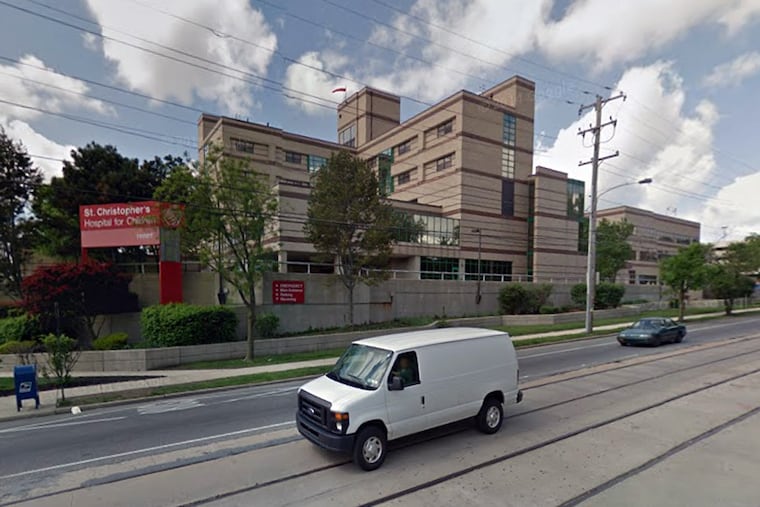Phila. baby's chemo overdose could point to safety lessons
Hospitals have made strides in preventing cancer medication errors by learning from terrible mistakes in recent decades, pharmacy experts say.

Hospitals have made strides in preventing cancer medication errors by learning from terrible mistakes in recent decades, pharmacy experts say.
Even so, another teachable moment has arisen from a case first reported by NBC10, in which a potentially lethal chemotherapy overdose was given early this month to a baby at St. Christopher's Hospital for Children.
"It's a terrible tragedy," said pharmacist Michael Cohen, president of the Institute for Safe Medication Practices, a Horsham-based nonprofit that works with clinicians, regulators, and industry to prevent errors. "I think there is a lot of learning to be done."
St. Christopher's echoed that sentiment, while declining to discuss the case because of patient privacy laws.
"We are deeply sorry that this situation occurred," the hospital said in a statement issued Friday, "and are evaluating every step of our process in order to identify ways to prevent a situation like this from ever occurring again."
The parents of the 11-month-old baby, Isaac Harrison, could not be reached for comment.
On its website, NBC10 posted St. Christopher's Oct. 13 letter to the parents and an Oct. 6 report by physician Gregory E. Halligan. According to those documents, which the station said the parents provided, Isaac was being treated for "a very unusual and serious cancer" with a drug called etoposide.
His dosage was "nonstandard and required manual calculation." The report blamed a "typographical error," while the letter said a miscalculation led to a daily dose that was 10 times higher than intended - 33 milligrams per kilogram of the child's weight instead of 3.3 mg. Five days of treatment was "already finished when the error was discovered."
Cohen and other experts offered some context.
Etoposide is used in a range of doses to treat numerous solid tumor and blood cancers, as well as, in very high doses, to wipe out diseased bone marrow in preparation for a transplant.
The dosage for older children and adults is based on "body surface area" measured in square meters; the typical daily dose is 100 mg. per square meter. But this approach tends to overestimate the dose for young children and infants, so a formula to calculate a weight-based dosage is used.
"When there is a wide variety of dosing schedules, if [pharmacists] see a tenfold difference from the correct dose, it may not stand out in their mind, because they occasionally see higher doses," Cohen said.
Evelyn Hermes-DeSantis, a Rutgers University pharmacy professor and director of the Drug Information Service at Robert Wood Johnson University Hospital, echoed the idea that a miscalculation may seem well within the norm.
"A tenfold difference in a pediatric patient may not look as big as in an adult patient," she said. "If the [correct] dose is 2 milligrams and it went to 20 milligrams, it's still a relatively small dose. If it's 20 mg. and went to 200 mg., that might catch an eye."
One standard safeguard, experts say, is to have at least one other pharmacist redo - not merely verify - the dosage calculation.
"A second individual should double-check the accuracy," said Daniel Hussar, a professor of pharmacy at Philadelphia College of Pharmacy.
Other safeguards have been developed as a result of high-profile tragedies.
In 2009, for example, Ohio enacted "Emily's Law," named for Emily Jerry, a 2-year-old who died in 2006 when a technician mixed her final dose of chemotherapy in a saline solution 23 times too concentrated. The law - championed by Emily's father and the supervising pharmacist, who spent six months in jail for her death - set standards for technician training and certification.
Another improvement is known as the "road map" - the document that spells out the patient's day-by-day cancer treatment protocol in ways that avoid ambiguity and misinterpretation.
Misinterpretation was key in the 1994 chemotherapy overdose death of Betsy Lehman, 39, an award-winning Boston Globe health reporter and the mother of two young daughters. Instead of being given the intended total dose over four days, she was given that total dose each day for four days. The error occurred at the renowned Dana-Farber Cancer Institute, where her husband was a research scientist.
"The way the drug was ordered - handwritten - directly led to confusion," Cohen said. "That stimulated the whole oncology community to look at how they prescribe and dispense" cancer drugs.
Still, Hermes-DeSantis said, no system is foolproof. The report by Halligan at St. Christopher's said Isaac's treatment involved a "custom road map," yet the error occurred.
The report said the parents were warned that Isaac might suffer life-threatening liver or kidney problems, or his bone marrow, which makes blood cells, might "not be able to recover."
The baby is now being treated at Children's Hospital of Philadelphia, according to NBC10. Children's would not confirm that.
215-854-2720@repopter